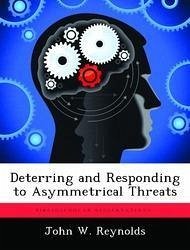Nicht lieferbar

Deterring and Responding to Asymmetrical Threats
Versandkostenfrei!
Nicht lieferbar
This study examines the doctrinal definition of deterrence, reviews Bernard Brodie's deterrence theory and discusses the impacts of his theory upon state and nonstate actors. The study further defines the terms asymmetry and asymmetrical threats and reviews a World View Threat survey (European and American) that identifies these asymmetrical threats as Islamic fundamentalists. Additionally, the study presents the ends, ways, and means utilized by the Union Army during the Civil War, and the ends, ways, means utilized by the US Army during operations in Bosnia in order to deter asymmetrical thr...
This study examines the doctrinal definition of deterrence, reviews Bernard Brodie's deterrence theory and discusses the impacts of his theory upon state and nonstate actors. The study further defines the terms asymmetry and asymmetrical threats and reviews a World View Threat survey (European and American) that identifies these asymmetrical threats as Islamic fundamentalists. Additionally, the study presents the ends, ways, and means utilized by the Union Army during the Civil War, and the ends, ways, means utilized by the US Army during operations in Bosnia in order to deter asymmetrical threats. The study concludes by presenting operational commanders with five principles for consideration when designing campaign plans against asymmetrical threats. These five principles are 1) first strike capability, 2) force protection (second strike capability), 3) the ability to threaten sever consequences on the belligerent's interests, 4) sending a deterrence message, and 5) demonstrating the will and determination to conduct retaliatory strikes. Additionally, the study concludes that neither active, passive, nor retributive actions by themselves are effective in deterring asymmetrically threats; it is only when these three actions are integrated together into a single campaign plan where one can hope to deter asymmetrical threats and regain the deterrence equilibrium.











